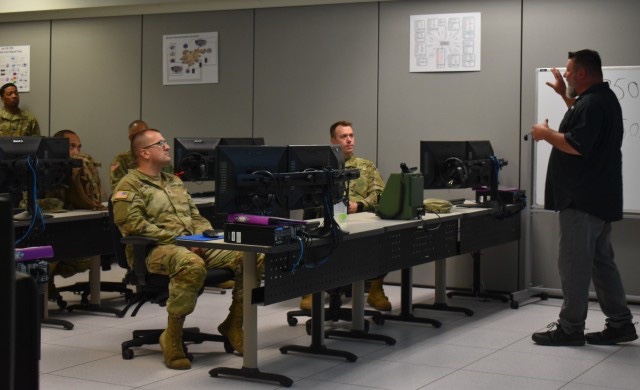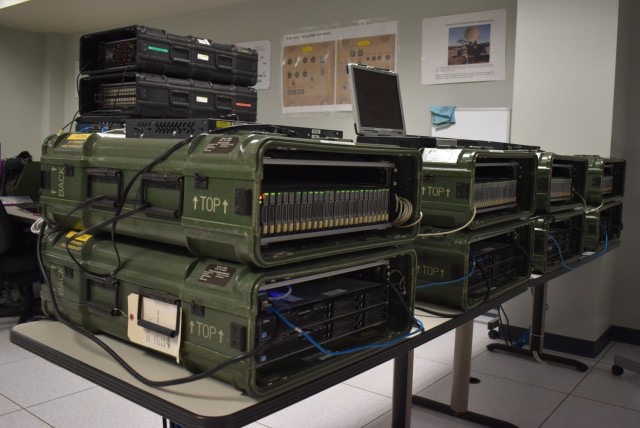
FORT GORDON, Ga. — When a Signaleer graduates from initial military training their learning has all but ended; rather, it is only beginning.
As members of a career field that is ever evolving, it is imperative to seek out — and take advantage of — opportunities for professional development.
One such opportunity is the Signal Digital Master Gunner, or S-DMG, Course. Offered exclusively at Fort Gordon, Georgia, it is the only S-DMG course in the Army that is approved by U.S. Army Training Command.
This five-week functional course supports the training of noncommissioned officers to install, operate, and maintain the local area network integration with the tactical server infrastructure and various mission command information systems.
Instruction encompasses the installation and configuration of hardware and software including: routers, switches and networking devices, Warfighter Information Network-Tactical operations, signal flow, troubleshooting, Exchange server, Active Directory, Structured Query Language server, domain controller, tactical messaging solutions, Extensible Messaging Presence Protocol, Cisco Unified Call Manager, Tactical Local Area Network Encryptor, Tactical Operations Center Intercommunication System and virtual machine software. Additionally, students are taught how to integrate data using the Data Dissemination Services, Joint Battle Command Platform and Command Post Computing Environment.
Students are initially trained in a classroom environment then required to conduct performance-based tasks on unit-fielded equipment.
Claudius Blanding, S-DMG course manager, said the course’s primary objective is integration, noting that students do not become experts on any one particular system but instead become well-versed in several.
“We teach them as integrators, so they know what questions to ask so that they know where to go to get the information,” Blanding said.

Each learning position in the classroom represents a brigade’s worth of servers, and each student, from beginning to end, builds those assets.
“They are utilizing that same network from day one in order for them to move on to the next block,” Blanding said.
The course is designed primarily for information technology specialists and signal support systems specialists, military occupational specialties 25B and 25U respectively, in the rank of sergeant or above. However, all other enlisted signal military occupational specialties — specialist and below — are eligible to attend with a waiver signed by their battalion commander. The training students receive is intended to complement the training that signal warrant officers and chief information officers receive at the battalion and brigade level.
Blanding said that there are many benefits to Signaleers taking the S-DMG Course.
“What this does is … when you have your warrant [officers] and S6 up at either brigade or division, they can call down at the battalion level and talk to somebody like one of these trained NCOs, and they understand the lingo,” Blanding explained. “It really benefits the battalion and below having a S-DMG graduate, because it helps out the signal warrant officers on that side.”
Ultimately, the intent is to develop signal noncommissioned officers as signal-digital master gunners and the commander’s subject matter expert providing critical and near real-time situational awareness in the unit’s integrated common operational picture.
Furthermore, Soldiers who complete the course are offered a resource of lifetime tech support.
“We encourage them to reach back to us if they have any questions … and we constantly get emails and phone calls from [graduates] giving us new updates on stuff or things that are changing out in the force, so we learn from them as well and pass that information along,” Blanding said.
Soldiers who are interested in enrolling must pass a pre-entrance exam. Enrollment is on a first-come, first-serve basis by registering in the Army Training Requirements and Resources System.
There is no pre-entrance exam study material available, as Soldiers are expected to have networking fundamentals experience and knowledge of the various Mission Command Information Systems.
Classes fill up quickly, so Soldiers should begin the process to enroll as soon as they know they want to attend.
For more information about the course, click here.
By Laura Levering
